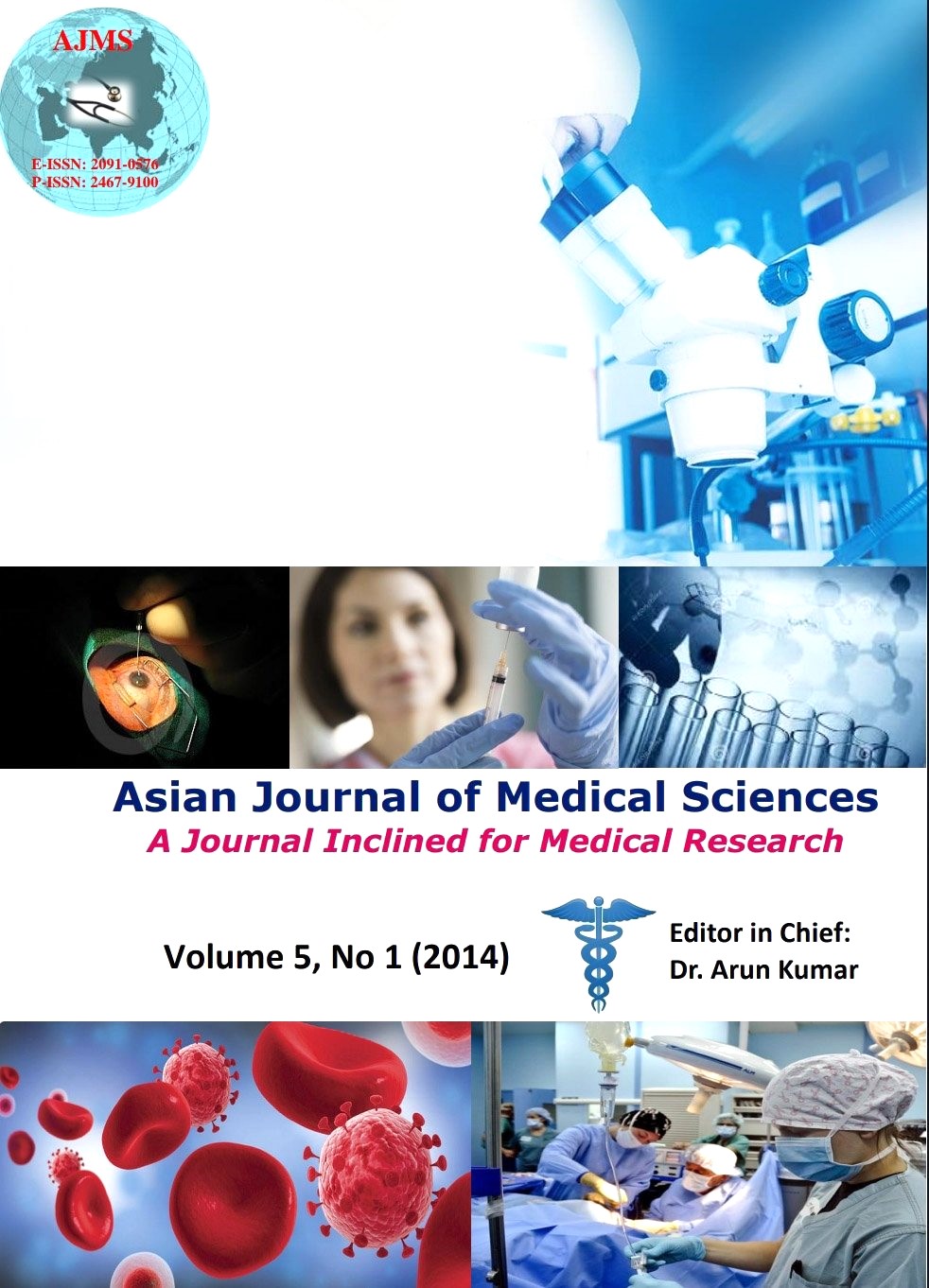Dyslipidemia and its Relationship with Cardiovascular Risk Factors in a Selected Population of Siliguri City, West Bengal, India.
Keywords:
Dyslipidemia, urban, adults, risk factor, cardiovascular diseaseAbstract
Background: Dyslipidemia, one of the classical Framingham risk factors of cardiovascular diseases, accounts significantly to the rise of non communicable diseases in India. Urbanization, along with greater consumption of dietary fats and decreased physical activity, has led to an increase in this problem manifold.
Objectives: To determine the prevalence of dyslipidemia among urban adults of Siliguri city, West Bengal and to identify the cardio-vascular risk factors associated with it.
Methods: This descriptive, cross-sectional study was carried out among the 226 adults aged ≥20yrs in an urban area of Siliguri city, West Bengal, India. Data was collected by detailed history and physical examination; biochemical measurements were done using standards procedures. Dyslipidemia was defined by the presence of one or more than one abnormal serum lipid concentration. Statistical analysis was done using chi-square test, t test and logistic regression analysis using SPSS 20 software (Chicago, IL, USA).
Results: Dyslipidemia was prevalent among 78.4 % of the total study subjects. Dyslipidemia was more in males than in females & in both males and females it was more prevalent in the age group 40 -59 years than in any other age group. It was associated with higher odds of major cardiovascular risk factors like hypertension, hyperglycemias, and tobacco use.
Conclusion: Dyslipidemia remains a significant and growing problem in this part of the country. The reduction in the disease burden will require changes in life style as well as in national policies.
DOI: http://dx.doi.org/10.3126/ajms.v5i1.8474
Asian Journal of Medical Science Vol.5(1) 2014 pp.1-8
Downloads
Downloads
Published
How to Cite
Issue
Section
License
Authors who publish with this journal agree to the following terms:
- The journal holds copyright and publishes the work under a Creative Commons CC-BY-NC license that permits use, distribution and reprduction in any medium, provided the original work is properly cited and is not used for commercial purposes. The journal should be recognised as the original publisher of this work.
- Authors are able to enter into separate, additional contractual arrangements for the non-exclusive distribution of the journal's published version of the work (e.g., post it to an institutional repository or publish it in a book), with an acknowledgement of its initial publication in this journal.
- Authors are permitted and encouraged to post their work online (e.g., in institutional repositories or on their website) prior to and during the submission process, as it can lead to productive exchanges, as well as earlier and greater citation of published work (See The Effect of Open Access).




